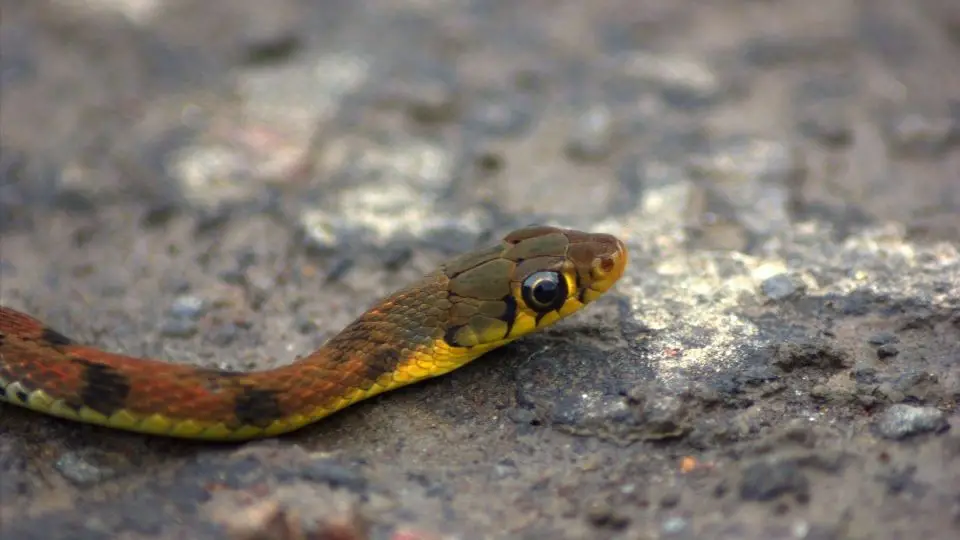The presence of an egg tooth sets baby snakes apart from adult snakes. With over 3,000 species of snakes on Earth, these reptiles come in all colors and sizes. They’re carnivorous, feeding on anything from birds to mice. They sleep an average of 16 hours a day and nest on loose vegetation.
Table of Contents
How Do I Identify a Baby Snake?
Aside from their smaller stature, an egg tooth differentiates baby snakes from juvenile or adult snakes. An egg tooth is a sharp, keratinized spine that protrudes from the tip of a baby snake’s snout.
Its main function is to help the limbless reptile break out of its eggshell—or live sac—during birth. This tooth usually falls off within the first week or two after the baby snake begins its first shed.
Behavior-wise, snakes are precocial, which means they’re independent immediately after birth. It takes about 2 to three years for them to reach sexual maturity, but they eat, hunt, and release venom like their adult counterparts as soon as day one.
What Is the Baby of a Snake Called?
Baby snakes are commonly referred to as snakelets. If the baby snake has recently hatched from an egg, it’s aptly called a hatchling. If the snake isn’t born from an egg but a live sac, it’s called a neonate.
Do Baby Snakes Bite?
Yes, baby snakes—both venomous and non-venomous—bite as a defense mechanism when they feel threatened. They may also bite to eat their food. That said, avoiding these snakes can prevent your finger from being bitten.
What Should I Do if I Find a Baby Snake?
Check the surrounding vicinity to see if any of its brothers or sisters are around. Since baby snakes don’t wander too far from their nests, knowing exactly how many you’re up against is essential.
Once you got a figure down, here’s what you must do.
- Identify
- Know whether you’re dealing with a venomous or not. Neonate snakes of the pit viper family, such as rattlesnakes and copperheads, are especially dangerous.
- Contact pest control
- Even if you’re certain the snake is not venomous, it’s best to let a professional remove it from your property.
- Relocate
- If you insist on catching the baby snake, do so with a long stick, wear gloves, and place it in a secure container. Once you’re done, release it into the wild less than a kilometer away.
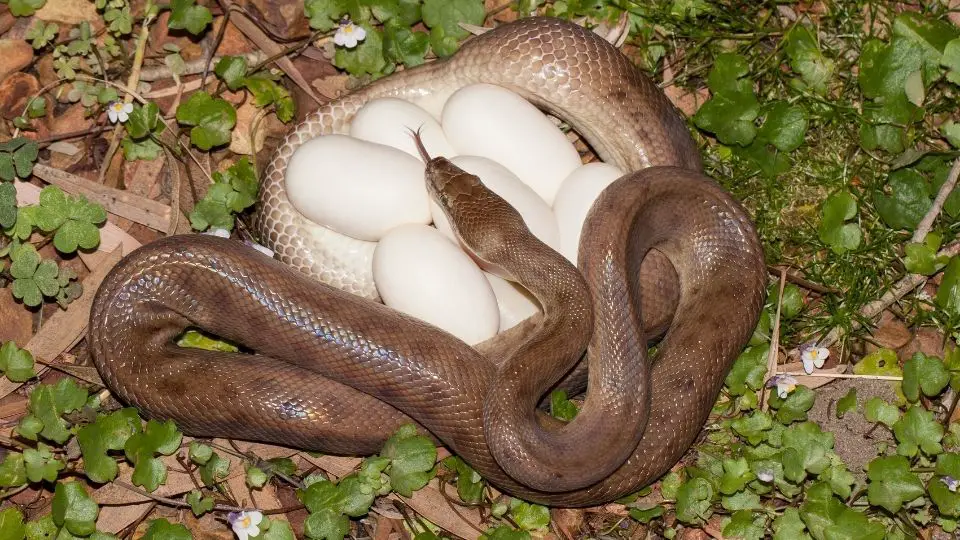
What Attracts Baby Snakes to Your House?
There are three main reasons a baby snake may wander into your yard or home.
- It’s born there
- The mother snake may have given birth to her litter inside your property.
- There are ample food sources
- If rodents or other small animals enter your home, baby snakes may follow to eat them.
- It’s cold, damp, and dark
- Snakes like to stay in dark places between 65F to 80F.
- Your basement or crawl space may unexpectedly be the perfect environment for them.
Do Mother Snakes Stay With Their Babies?
No, most snakes will abandon their young immediately after laying down their eggs. However, some snakes may incubate the eggs and only leave once they’ve hatched.
What Snakes Will Chase You?
Large venomous snakes like pit vipers and boas can chase humans who venture too close to their territory. The Central American bushmaster is one classic example of this.
But a chase doesn’t always ensue when you accidentally encounter a snake. Most snakes are more likely to slither away when they see people approaching.
Are Snakes Scared of Humans?
An overwhelming majority of snakes are afraid of humans and don’t want anything to do with them. These snakes usually only bite people when they feel threatened or provoked.
How Do Snakes See Humans?
Snakes have sensitive infrared sensors on their pit organs, helping the snake “see” the heat signature of nearby mammals. This unique organ allows snakes to detect humans nearby.
Their pits are also sensitive to sudden movements. This allows them to detect a predator or prey’s presence farther away.
What Do Baby Snakes Eat?
Baby snakes eat virtually the same diet as their adult counterparts; the only difference is that they eat a smaller volume. This can include frogs, insects, rodents, fish, eggs, and worms.
What Is a Group of Snakes Called?
A brood of snakes is called any of these four terms: a den, pit, bed, or nest. A group of rattlesnakes, on the other hand, is called a rhumba.
What Do Snakes Look Like When They Are Born?
Baby snakes bear an uncanny resemblance to their adult counterparts. Think of them as shrunk-down versions of adult snakes of the same species.
They have the same proportions and features, including eyes, fangs, and pits. Some species of baby snakes look almost like a worm, but their scaly texture helps differentiate the two creatures.
Where Do Baby Snakes Live?
Baby snakes live close to where they’re born. This could be in dens located in gardens, forests, sheds, wood piles, or burrows. They may venture out of their first habitat if food sources are limited.
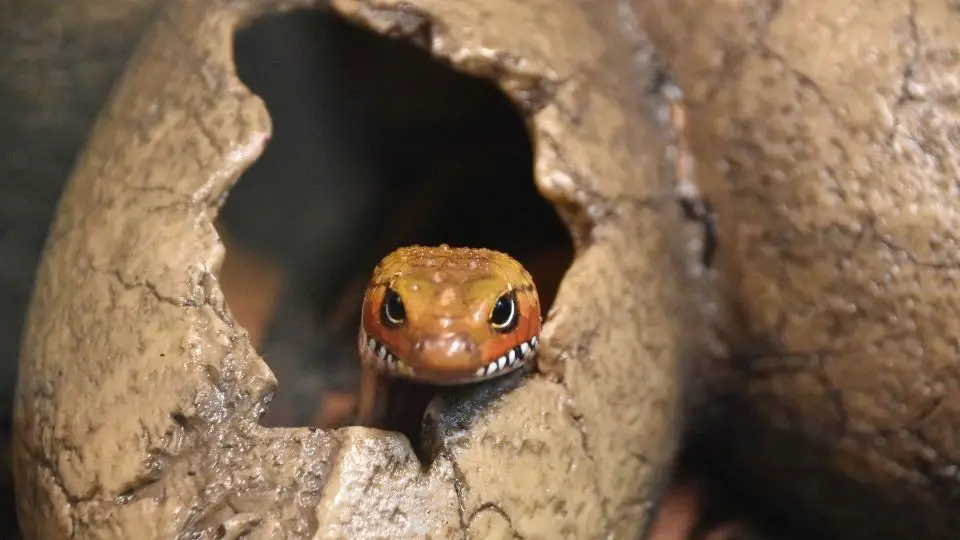
How Do I Identify a Snake in My Yard?
Identifying a snake entails recognizing distinct markers they have. This includes:
- Body type
- How slim, long, and thick is the snake?
- Colors
- What are the dominant and band colors of the snake?
- Patterns
- Any defining features?
- Diamonds, spots, speckles, rings, stripes, tones, and banding are useful indicators
- Eyes
- What’s the eye color, eye shape, and size?
- Any defining characteristics surrounding the eye?
- Head shape
- Does it have a neck?
- Is the head shaped like a spade or an oval?
- Tail shape
- Is there a rattle or scale at the end?
- Is there a pattern?
If you’re having trouble identifying a snake, consider taking a photo and showing it to a licensed reptile specialist for help.
What’s a Rattle Snake Look Like?
A rattlesnake’s most defining feature is its rattling tail, which it uses to create a buzzing noise. This noise is used to shoo away predators from approaching its territory.
Two other defining features of a rattlesnake include a triangular head and a broad body. These reptiles can grow up to eight feet in length, making them formidable predators in the wild.
Rattlesnakes are usually brown, gray, black, or olive. Their patterns also vary depending on the species; some may have spotted designs, while others could have diamond ones.
What’s a Rat Snake Look Like?
The head of a rat snake is usually larger than its body, which can help differentiate it from other snakes.
However, its most striking feature is the contrast between its black, shiny scales and its white underbelly. These medium-to-large snakes can grow up to 7 feet in length.
Another way to identify rat snakes is by their white chin, which can look prominent against the head’s darker color.
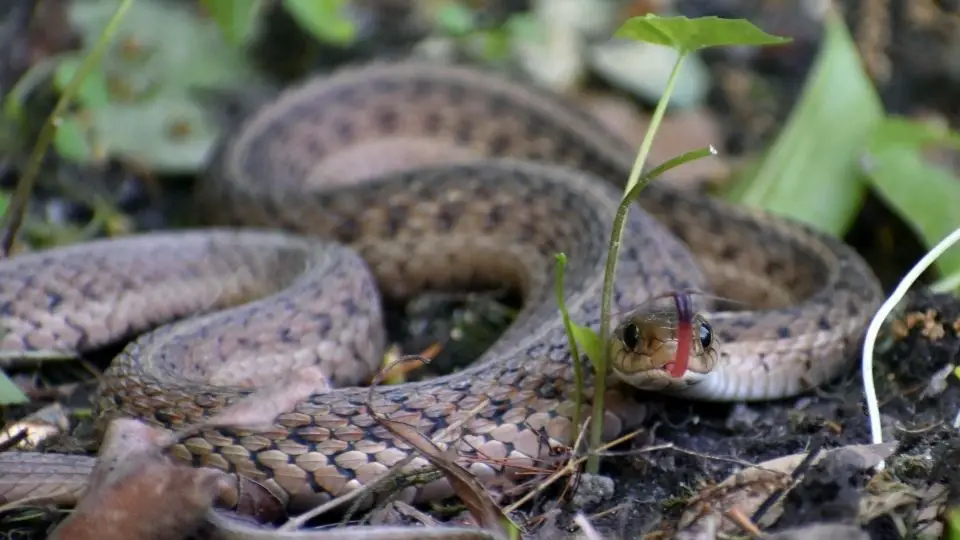
5 Snake Facts
Here are five interesting facts about snakes that may surprise you.
- Rat snakes emit a foul-smelling odor when threatened, like a skunk!
- Snakes use their tongue to sense their surroundings.
- Snake skeletons have over 100+ ribs!
- Do snakes pee? Do snakes poo? They expel all liquid wastes through their cloaca.
- The fastest snake is the sidewinder snake, with a “running time” of up to 18 mph.
Are Snakes Blind?
Snakes have poor eyesight in the traditional sense. But, they’re exceptionally skilled in determining the heat signature of their prey.
For the most part, they primarily rely on other senses. This includes their tongue, which they use to feel around and detect scents in the air and their environment.
Where Do Snakes Live?
Snakes are hardy creatures, thriving in temperature and tropical conditions spanning almost all continents, barring Antarctica. They’re found in nearly every biome, from the depths of the Amazon to scorching-hot deserts.
They often inhabit abandoned burrows or tree tops, where they’re safe from the elements and predators. They may live by themselves or in a community known as a den.
Snakes can also invade homes, as they have an affinity towards dingy and damp areas rich in food sources. This can just so happen to be a home’s basement, vent, or attic, whether it’s in rural Kentucky or upscale New York City.
What Do Snakes Eat?
If you’ve ever wondered about the usual composition of a snake diet, they typically eat small animals. Some snakes will also eat other snakes. They don’t eat plant matter and their diet does include, but is not limited to:
- Rodents
- Lizards
- Frogs
- Birds
- Eggs
- Bats
- Fish
- Geckos
- Amphibians
- Insects
Do snakes eat mice?
Mice and rodents are staples in a snake’s diet. Bite-sized and abundant, snakes enjoy eating these tiny mammals.
Is a snake a carnivore?
Yes, they exclusively eat animals.
What Predators Eat Snakes?
While snakes are carnivores, they aren’t necessarily at the top of the food chain. A plethora of different predators can capture and eat a snake. This includes:
- Birds of prey
- Tigers
- Bobcats
- Alligators
- Snapping turtles
- Mongoose
- Skunks
Birds of prey, including eagles and herons, can utilize their eagle vision to lock onto their target. Then they swoop down and grip the reptile with their claws.
Surprisingly, other snakes may also prey on smaller snakes. For example, in the wild, a black cobra may prey on a ball python or kingsnake.
Do foxes eat snakes?
Foxes are omnivores, and they do enjoy meat once in a while, including snakes.
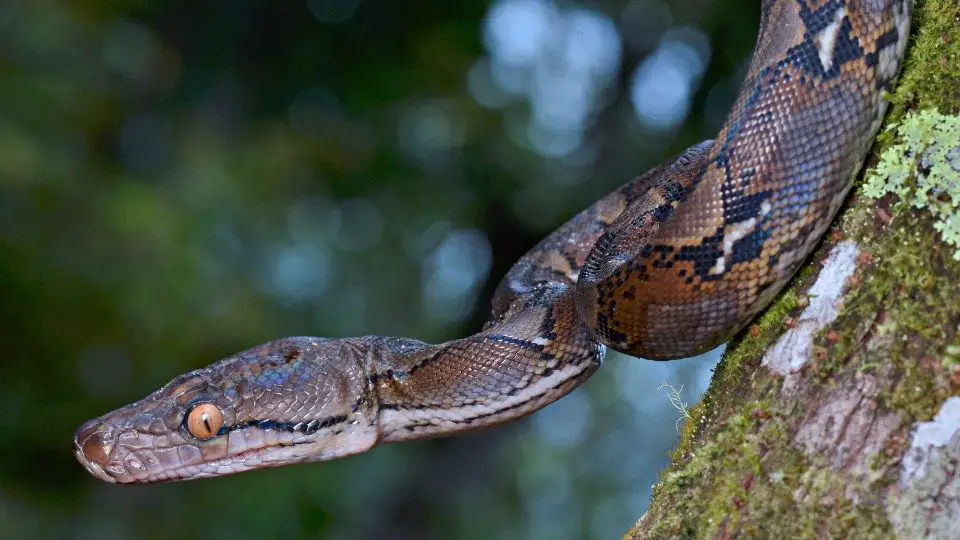
Where Do Snakes Go In The Winter?
During the increasingly cold temperatures, snakes hide away in their dens called hibernacula to keep themselves warm. These dens can take on many forms. They could be abandoned burrows or a fortified corner in your home’s basement.
Are Snakes Dangerous to Humans or Pets?
Out of 3,000 species of snakes, about 600 of them are classified as venomous. Of that figure, only about one-third of all venomous snake species are capable of severely harming a human or a pet. Small dogs like a poodle or chihuahua have been targeted by larger snakes before, so it’s best to keep them inside.
If you spot a snake in your own backyard, it’s best to leave a professional to deal with the varmint. Many non-poisonous snakes, like garter snakes and venomous snakes, look alike, so it’s best to err on the side of extraordinary caution when dealing with these cold-blooded reptiles.

